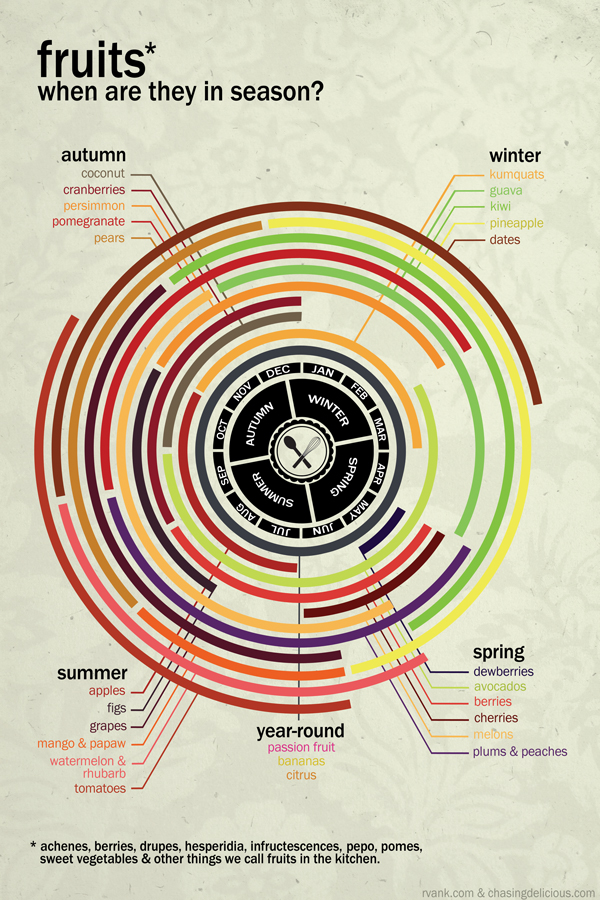One of the things we have realized is that if you build a green home but the inhabitants are not green you have lost half the benefit. As a New York green contractor we learned that educating ourselves and our clients in green lifestyle habits is an important part of the green building process.
One of the huge elements of green living is being in harmony with your surroundings – your neighbors, your community, the cycles of day and night and the seasons – very much like it is important for a green building to work in harmony with its surroundings – rainwater runoff, energy consumption, sewage discharge, heat island effect…
One of those things listed – the seasons – has a lot to do with died. There are benefits to eating local as most people know, but equally connected to this is the importance of eating seasonal. If you don’t eat seasonal there is no way you can eat local. For example if you live in New York there are no naturally growing watermelons in the winter. If you eat one they come from far away – Central and South America most probably, but possibly as far away as China.
The exception to this is the evolving art of greenhouse growing and/or hydroponics, a synergy between traditional farming and current science – plastics, pumps, plant food extracts, electric lights…not to say this can’t be green but it definitely is more carbon intensive than carrots in the old farmer’s soil.
The one pro greenhouse/hydroponics argument is that you can grow more food per square foot than traditional farming. Maybe. But at what carbon footprint cost? And compared to what? Certainly not compared to Permaculture.
Even so, it pays to eat seasonal and local whenever possible. The food is fresher and there is nothing more magical than eating in harmony with the season. A watermelon in the dead of winter just isn’t the same as one in the life of summer.
Here are two great graphics showing the availability of of fruits and another vegetables for a Northern Hemisphere location. They are not only beautiful but extremely helpful. The one caveat is that they aren’t locally focused. For example they list kiwi and pineapple as available in the winter….available from New Zealand maybe.
But nonetheless it just takes a little common sense to use the charts for local and seasonal eating.
Bon Apetit.


